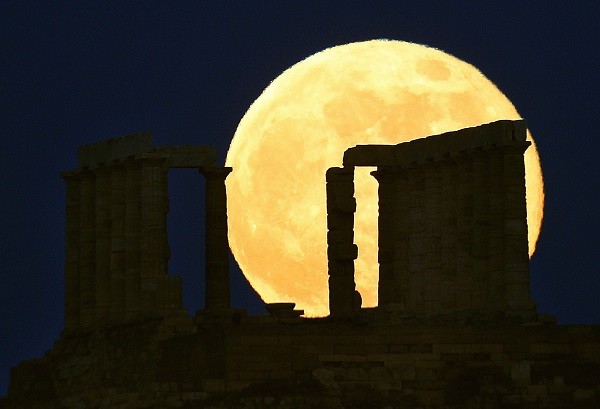
The first of the three consecutive summer supermoons is set to appear on Saturday, 12 July at about 7:25 a.m. EDT (11:25 GMT or 4:30 p.m. IST).
Compared to an average full moon, the July supermoon is expected to appear 30 percent brighter and 14 percent larger than usual.
Supermoon is also called "perigee moon". Perigee means "near Earth". As the moon orbits Earth, at some point of time every month, it comes closest to the planet, which is termed "perigee". When it is farthest once each month, it is called "apogee".
Supermoon is a phenomenon when the moon is around 50,000 kilometers closer to the Earth's orbit than usual and the effect is most evident during a full moon. As a result, the moon may seem a little bigger though the difference is not much noticeable.
Moreover, with the supermoon, tides larger-than-usual are expected in some parts of the planet, explained Earth Sky. Every month, on the day of the new moon, Earth, moon and sun are aligned in a straight line, with the moon in between. This creates wide-ranging tides and with the July, August and September supermoons, larger-than-usual tides may hit the planet.
"High astronomical tides will occur this evening and Saturday evening. High tides around 7 feet could bring minor tidal overflows and beach erosion to area beaches, especially south of Point Conception, and smaller rock jetties will be more susceptible to wave over-topping. Due to the complex bathymetry along the California Coast, rip currents are always possible. Always swim near a lifeguard." National Weather Service warned the costal areas of California.
The year 2014 has a total of five supermoons. There were two new moons in January and the full moons of July, August and September are yet to brighten the skies.
August will have the biggest supermoon of the year, when the moon will be 356,896 kilometers or 221,765 miles away from our planet at 18:09 GMT (11:30 p.m. IST), only a few minutes after perigee at 17:44 GMT. On 9 September, the last of the three supermoon will be seen on the following morning until 1:38 GMT for the full moon.
"Generally speaking, full moons occur near perigee every 13 months and 18 days, so it's not all that unusual. In fact, just last year there were three perigee Moons in a row, but only one was widely reported," NASA Science News quoted Geoff Chester of the U.S. Naval Observatory.
He further explains that it is hard to differentiate a supermoon and a full moon. A mere 30 precent increase in brightness can be easily masked by a cloudy sky or haze.
Check out the video of some earlier sightings of supermoons, here.









